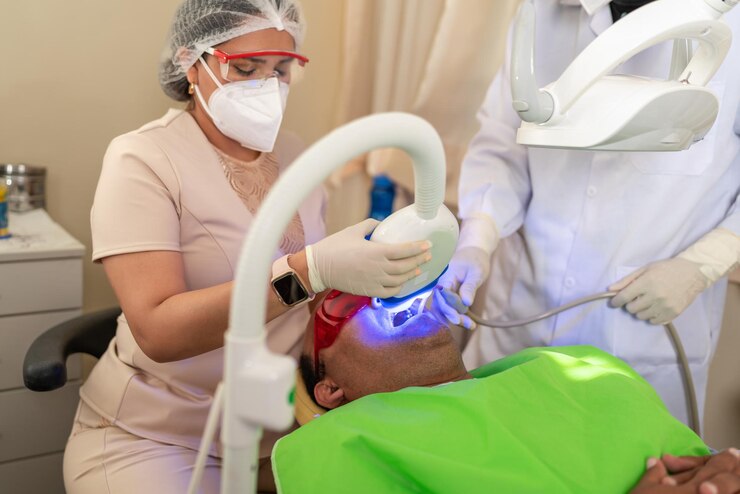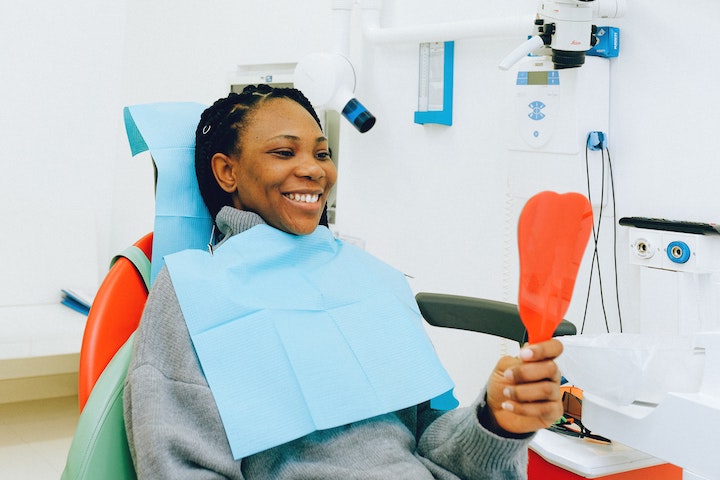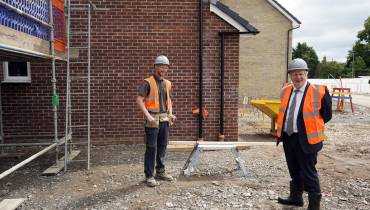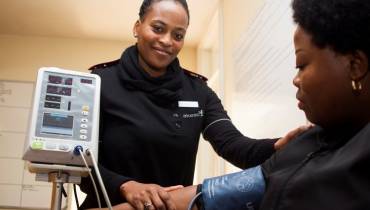LANAP: The Big Breakthrough in Periodontal Treatment

As technological advances in the dental health sector continue, new and innovative treatments are coming up to ease people’s oral health issues.
LANAP, or Laser-Assisted New Attachment Procedure, is a new and revolutionary gum surgery method used to treat patients with gum disease.
LANAP gum surgery is an alternative to traditional gum surgery and is also safe for patients with diabetes, HIV, hemophilia, or those taking medications.
How LANAP Works
LANAP is a periodontal gum disease laser treatment that is FDA approved and uses laser technology to treat periodontal disease. The technique is used to regenerate bone and soft tissues around the teeth. This treatment is less painful than traditional surgical methods.
LANAP surgery uses a highly specialized Nd-YAG laser to remove diseased tissue and seal the pocket. This new-age laser technology does not harm healthy tissues or interact with other medications.
The procedure is carried out under local anesthesia. The doctor reviews the patient's medical history and performs an oral exam. They will also take diagnostic images and x-rays if necessary.
The first laser pass will remove bacteria and tartar from the root surface. The second pass will seal the pocket.
After the initial laser passes, the pocket is cleaned of plaque, and the root surfaces are scrubbed clean. After this, a laser is used to treat the periodontal pockets.
Pros of LANAP
The LANAP protocol stimulates the growth of new alveolar bone and cementum. It also decreases the chances of infection following the procedure. This allows the patient to avoid stitches and postoperative discomfort.
The LANAP dental procedure is also less expensive than traditional surgical methods, depending on the area, technique, and other factors. Most patients will have two sessions, and each session will last two hours. The second session will treat the other side of the mouth.
The LANAP technique has been shown to provide better results than traditional periodontal surgery. It allows patients to avoid stitches, postoperative discomfort, and cosmetic concerns. This treatment has also been shown to provide long-term relief from gum disease.
The LANAP dental procedure also involves less bleeding and edema. The procedure can be performed in half-mouth systems within a month. The process costs the same as traditional gum surgery. Most insurance carriers also cover it.
Sometimes, a conscious sedation procedure can be used to keep patients comfortable during the course. After the procedure, patients should avoid strenuous activities for several hours. It is also important to clean the area and use a mouth rinse every three hours.
LANAP vs. Traditional Gum Surgery

LANAP is a more targeted and less invasive method for gum disease treatment. The LANAP dental procedure eliminates diseased gum tissue, promotes new tissue growth, and eliminates harmful bacteria.
The LANAP procedure uses a special laser to target diseased tissue and remove it. It also encourages healthy tissue to attach to the root of the teeth. This prevents tooth loss and future dental problems.
LANAP does not involve stitches or scalpel cuts and has quicker recovery than traditional gum surgery. In most cases, patients can return to normal activities after just a day. The laser has also been proven less painful and has a lower risk of infection.
Traditional gum surgery involves removing the infected gum tissue and reshaping the bone. This can cause extensive gum recession, exposing the tooth roots and making the teeth sensitive. It can also take up to two weeks to recover.
LANAP laser gum surgery is less invasive and can achieve the same results as traditional gum surgery. It also uses less energy, so there is less risk of damage to healthy tissue. It is also less painful so patients can avoid narcotic pain medications.
LANAP gum surgery also strengthens the teeth, which can help prevent future dental problems. It may be a more cost-effective method of treating gum disease. This procedure can be performed in one or two visits, depending on the extent of gum disease.
LANAP surgery is less invasive than traditional gum surgery, so you can use it to treat periodontal disease, and it has a lower risk of complications. Patients report that the procedure is virtually painless. It also reduces the risk of bleeding and sensitivity. It is also less traumatic for the gums, making it easier for patients to heal.
LANAP is also FDA-approved. This means that most insurance carriers will cover the cost of LANAP. However, it may only be covered by some insurance carriers. Some may only cover the cost of traditional gum surgery, and some may not cover any surgery at all.
LANAP for treating Gingivitis
Using the Laser Assisted New Attachment Procedure to treat gingivitis is an effective, safe method of treating periodontal disease. The procedure is fast and painless, allowing patients to return to their daily routines sooner than traditional treatments. The process also will enable patients to avoid pain, swelling, and loss of teeth.
The Laser Assisted New Attachment Procedure targets the bacteria that cause gum disease and destroys the diseased tissue without harming healthy tissue. The LANAP surgery procedure also allows the regeneration of the attachment apparatus around the teeth. The new tissue is stronger and more durable than the previous attachment.
LANAP uses Nd-YAG laser, which is the first and only digital laser that is FDA-approved to remove diseased tissue from the mouth. The laser also stimulates the regeneration of healthy tissue. The Nd-YAG laser is the latest generation of gum disease treatment technology that is approved by the FDA and safe to use for gum disease treatment.
The dentist inserts a small periodontal probe with a diode laser into the gingival pocket during the procedure. The laser uses a technique called selective photothermolysis to remove unhealthy epithelium and connective tissue. The laser also stimulates the growth of stem cells, which are needed to produce new healthy bones. The laser can remove bacteria from the pocket and decrease the depth of the pocket.
The treatment is performed in as little as 24 hours. However, patients may experience some swelling and mild aching for a few hours. This is a normal reaction to laser therapy. Using pain relievers can help alleviate throbbing around the treatment site.
After the gum disease laser treatment, patients should not brush the area for ten days. They should also limit physical activity for the first 24 hours. Daily multivitamins and drinking liquids are also recommended for the first seven days after the treatment.
Patients are advised to avoid spicy or hot foods for three days. They can return to a regular diet after ten days. Soft foods are encouraged for seven days. Soft foods are steamed vegetables, pasta, or eggs. You should eat them gradually as the mouth heals.
The LANAP gum surgery is the only laser periodontitis treatment protocol that has received FDA clearance. It is also more effective than traditional surgery.
LANAP for patients with Diabetes, HIV, Hemophilia, or Medications
LANAP is a safe, FDA-approved technique for treating periodontal disease. This innovative technique uses the PerioLase Nd:YAG laser system to remove diseased tissue from the mouth without damaging healthy tissue. It has been proven safe for people with diabetes, HIV, hemophilia, or who take medication.
Traditional surgical procedures involve cutting or suturing gum tissue. This can be painful and result in swelling and bleeding. LANAP laser gum surgery is less invasive and has a short recovery period. Most patients can return to work the next day.
LANAP’s PerioLase system emits energy at varying pulsating frequencies to remove bacteria from the gums. It also stimulates the growth of healthy tissue. This process allows for the regrowth of bone and healthy attachment around the teeth. The laser system is FDA approved and is safe for patients taking medication.
LANAP gum surgery is also an effective treatment for moderate to severe gum disease. It is less invasive and more effective than conventional gum surgery. LANAP also provides long-term results, unlike traditional gum surgery. You can complete the procedure in as little as two 2-hour sessions.
Recovering from a LANAP Procedure

After the laser treatment, it is important to avoid chewing food near the area where the laser was used for at least one week. You should also not brush your teeth for ten days.
Moreover, avoid foods that are hot or spicy. And drink a lot of liquids during the first three days. This will help prevent blood clots from forming between your gums and teeth.
The LANAP laser procedure uses a tiny fiber. This fiber is about the thickness of three human hairs. It is inserted between the gums and teeth to remove diseased tissue. The thread also kills bacteria by absorbing laser energy.
While LANAP does not require a general anesthetic, the doctor may need to administer a small local anesthetic to the treated area. You may experience tooth sensitivity, which is normal after laser therapy. If your teeth become sore, however, you should tell your dentist.
Ultimately, LANAP is an effective new gum disease laser treatment that reduces inflammation, bleeding, and pain. It provides long-term results and is less traumatic than traditional gum surgery. Patients report less pain during and after the procedure.










![5 Essential Ways to Keep Your Online Data and Information Safe Cybersecurity Facts You Need to Know to Protect Your Business [Infographic]](/sites/default/files/styles/video_thumbnail_bottom/public/data-privacy-safety-essential-to-keep-online-information-safe.png?itok=7q1XtE4l)




![5 Tips to Expand Your Business into New Markets Abroad Cybersecurity Facts You Need to Know to Protect Your Business [Infographic]](/sites/default/files/styles/video_thumbnail_bottom/public/group-people-are-having-meeting-grow-business-abroad-internationally.jpeg?itok=Ofc-gzqT)




